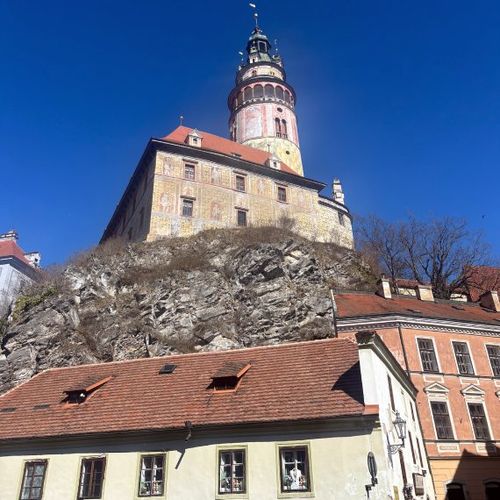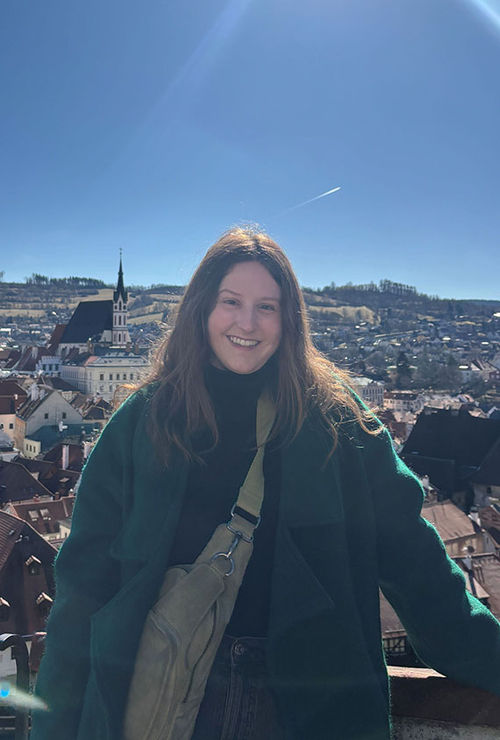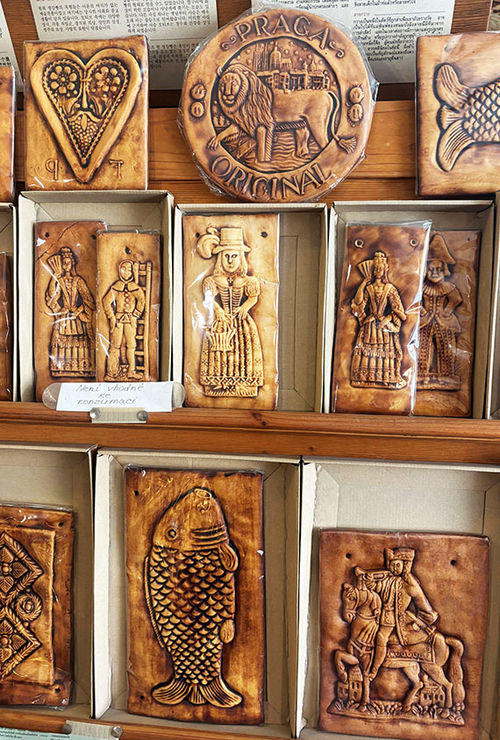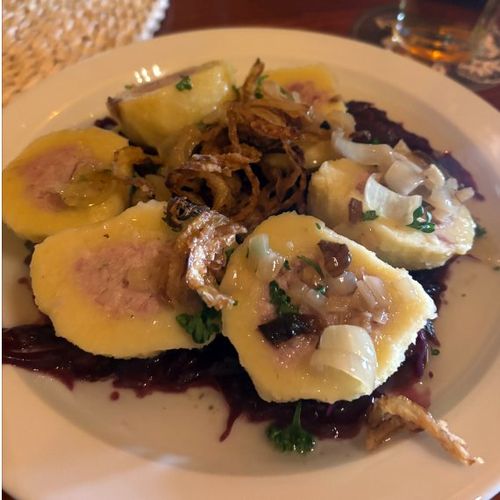Cesky Krumlov, CZECH REPUBLIC — As I watched a trio of schoolboys traverse the rocky hillside to improperly gain access to a walkway of Cesky Krumlov Castle, it dawned on me that boys over the past seven centuries had likely committed the same mischievous act.
I shared the sentiment with a tour group companion, who shared that he was struck by the sheer number of people who had passed through the castle’s walls and those who would come after us. Leave it to a 772-year-old castle to make one feel sentimental and romantic about strangers from lifetimes ago.

A view of Cesky Krumlov Castle from the old town. Photo Credit: Brinley Hineman
We were part of an Emerald Cruises excursion to Cesky Krumlov, a 13th-century town that is home to just 13,000 people but attracts anywhere from 800,000 to 1 million visitors each year. The castle, built directly into a mountainside, overlooks this storybook town and its cobblestone streets, giving the sense that the community is frozen in time or plucked straight from a fairytale.
The Vltava River cuts through Cesky Krumlov, making it easy to understand why the area has been inhabited since the Older Stone Age (that’s 70,000 – 50,000 B.C.). The serpentine river lends itself to the name of the town; Krumlov comes from the German “krumme aue,” which translates as “crooked meadow.”
We had come here on a day tour on a specially curated cruise following the ASTA River Cruise Expo to give us a taste of Emerald’s Danube highlights. Although not situated on the Danube, the Czech Republic town finds itself on many river cruise itineraries, with AmaWaterways calling it a “guest favorite.”

Travel Weekly’s Brinley Hineman in Cesky Krumlov. Photo Credit: Brinley Hineman
Our group marched up the hill to the domineering castle and were treated with a sweeping view of the town once we reached the top. The weather was unseasonably cold (it had snowed the day before), but the sky was a cerulean blue, with streaks of golden sunshine streaming down on the terracotta roofs below.
Our knowledgeable guide shared the history of the castle and town, which is a UNESCO World Heritage Site. The medieval town is not only a stunning and important piece of history but also provides visitors with a glimpse into what life looked like in its heyday. Here you’ll find a courtyard painted with images of Roman gods circa 1575 from painter Gabriel de Blonde and a castle moat (cool!) with bears (yes, real ones).
I, along with several others in my group, were shocked to discover that the moat was home to living bears. Our guide had mentioned the bears were deeply connected to the Rosenbergs, who reigned for three centuries, and were depicted on the family’s coat of arms. Several of us were under the impression we would find bear statues at the castle. Then I noticed a sign: “Please do not feed the bears.” I peered into the moat to see two brown bears in their enclosure, next to piles of fresh produce. Apparently there are a total of four, two of which were rescued as cubs after being illegally brought into the Czech Republic from Russia.

Cesky Pernik sells gingerbread artwork, continuing a medieval tradition of decorating homes with the baked good. Photo Credit: Brinley Hineman
The castle has a long tradition of bearkeeping, dating back to the 16th century, and the animals have called the moat home since 1707. However, the Czech National Heritage Institute has ordered that come 2030 the tradition must end due to welfare concerns.
After observing one bear gnaw on a tree branch for a few minutes, our tour concluded and our group scattered. Following the direction of our guide, I joined two of my tour companions in exploring the old town, ducking in and out of shops, including Cesky Pernik, a bakery that makes Old Bohemian gingerbread using a 16th century recipe. (Like I said, fairytale vibes). I considered buying pressed gingerbread art for my gallery wall at home, but instead I opted for some jam to accompany a jar of honey I purchased the day before from a monastery.

At Travel Hostel, dumplings stuffed with smoked pork sausage, served with crispy onions on a bed of caramelized cabbage.
Afterwards, I meandered through the winding streets before settling on Travel Hostel for lunch, which was recommended by our guide for affordable Czech food. I’ll eat mostly anything (except ketchup to the shock of many condiment lovers), so I asked our server what he suggested and landed on “bramborovy knedlik plneny uzeninou a zeli,” — potato dumplings stuffed with smoked pork sausage atop caramelized cabbage.
Our server said the meal would be best enjoyed with a beer, and although I initially declined since I don’t care for the drink, I waffled on my decision and asked him to bring me “whatever.” I couldn’t tell you what I drank, but it got the job done. The food was marvelous, and the atmosphere made the meal all the more pleasant. The 13th century building exuded a rustic, no-frills charm, as evident by dining in a former horse stable that I had to duck to enter.
Then I boarded the bus back to the Emerald Luna, where I finished my day happily ever after.
